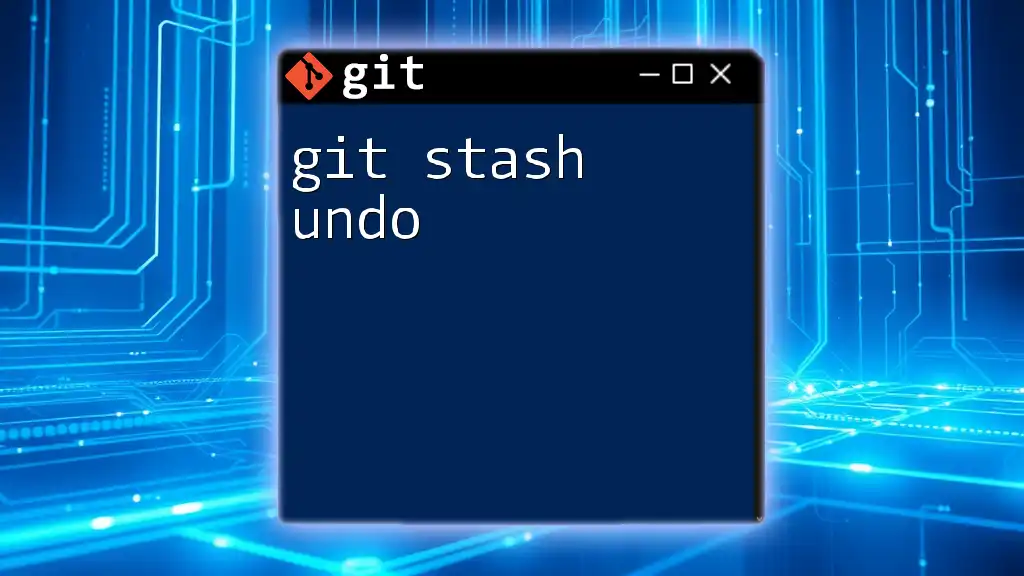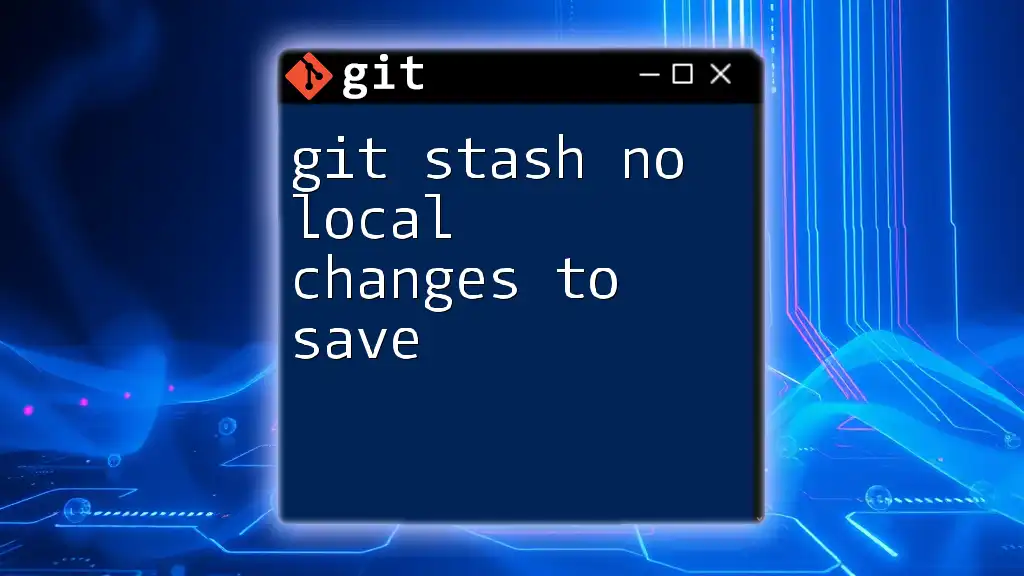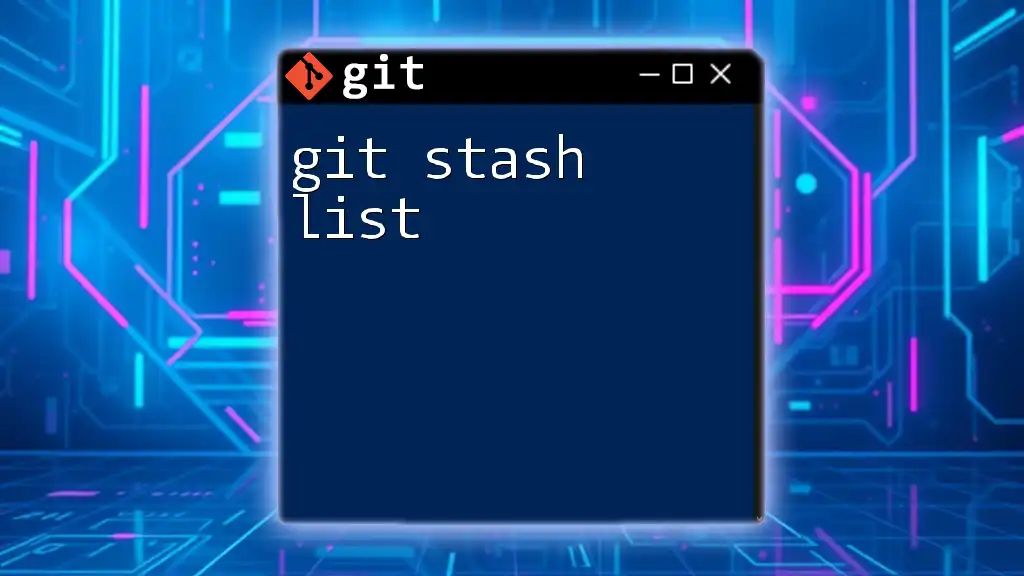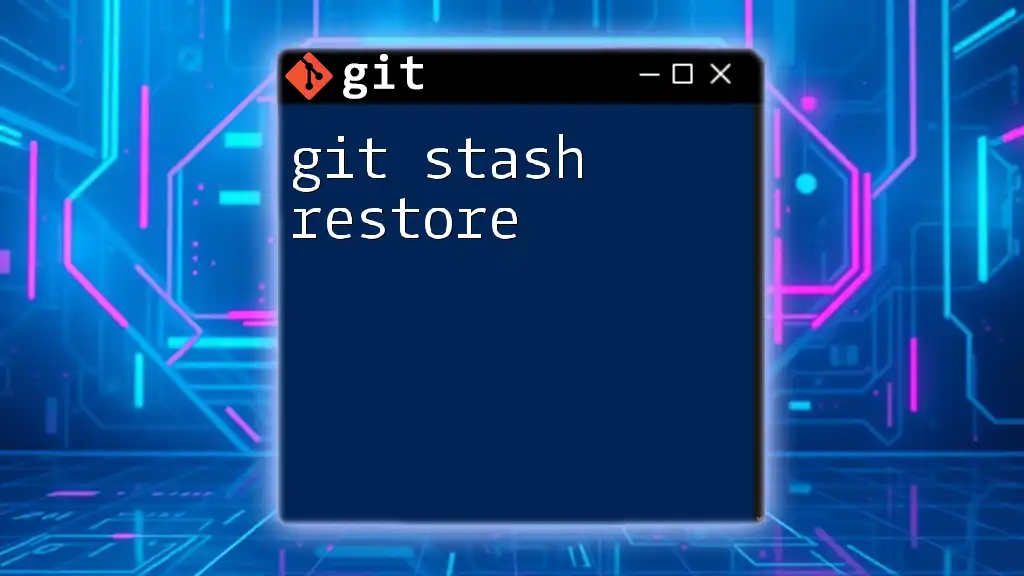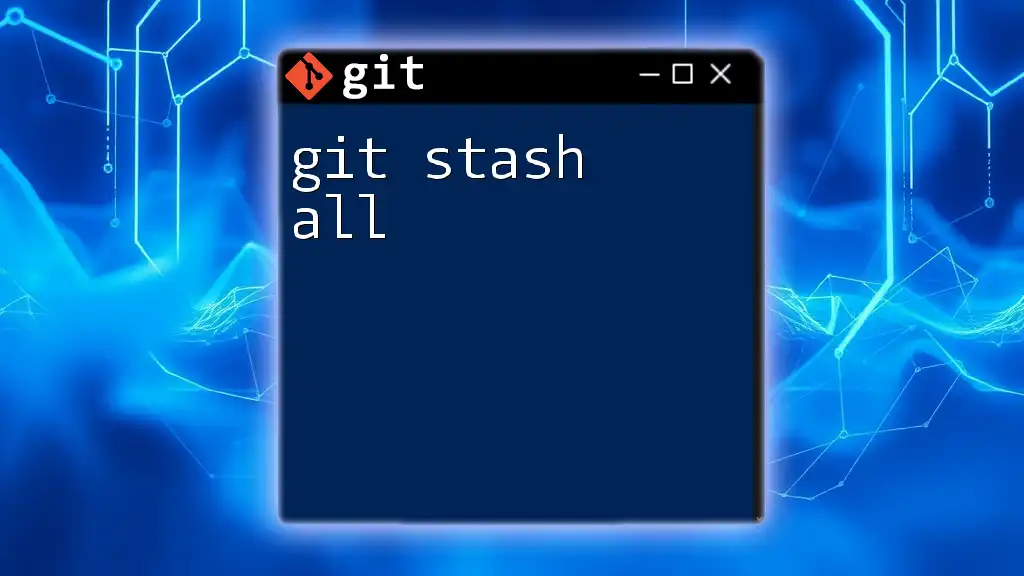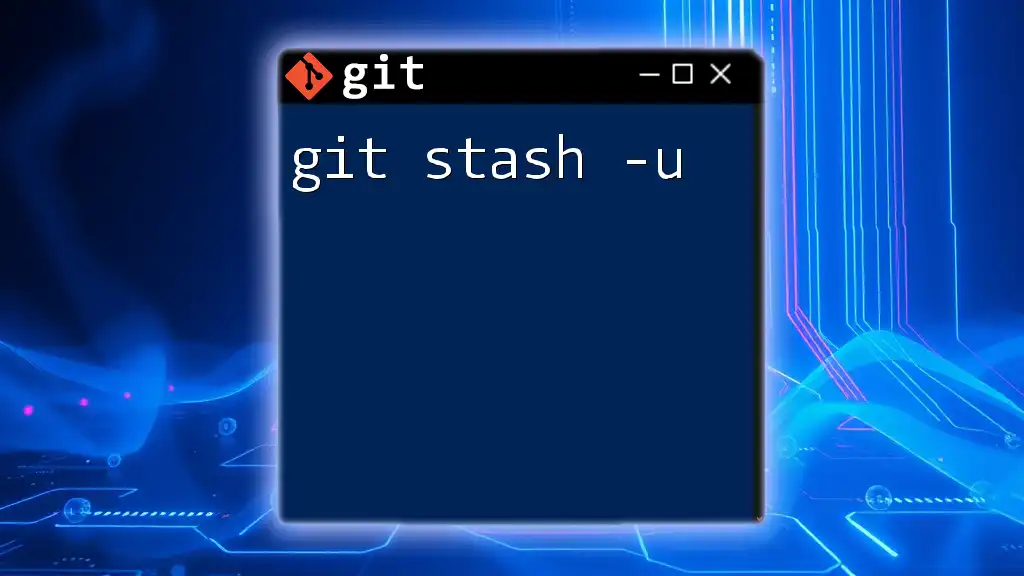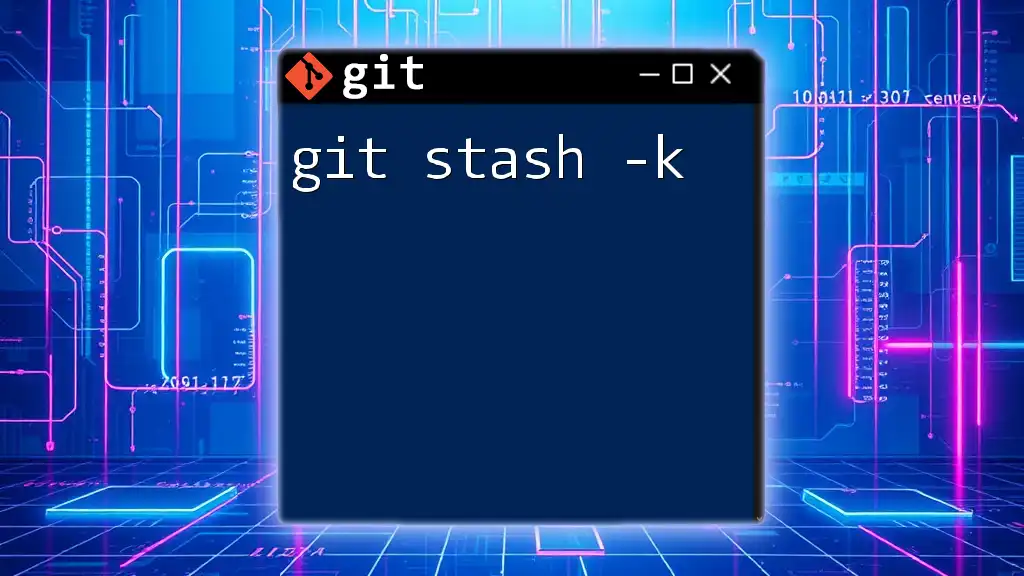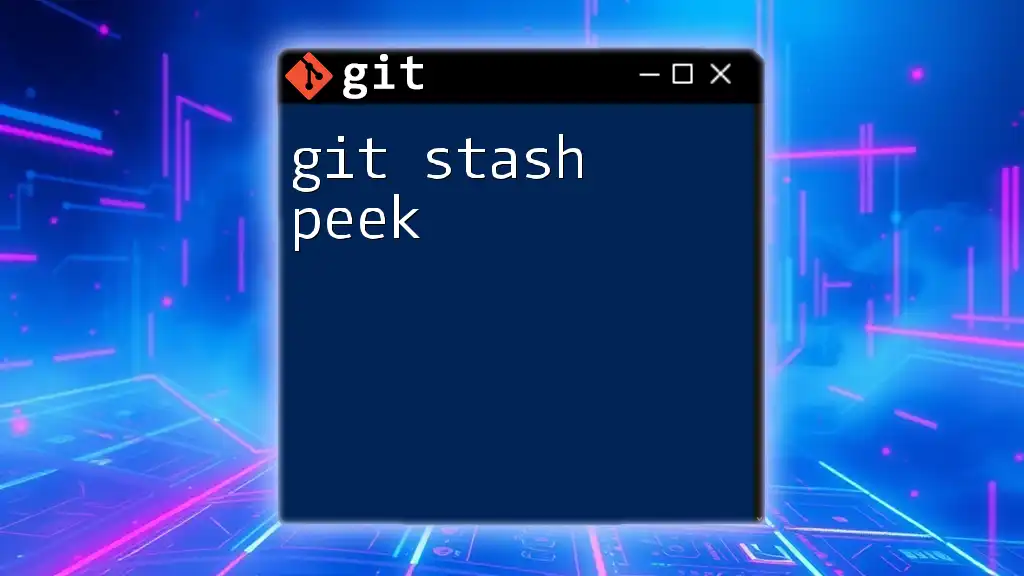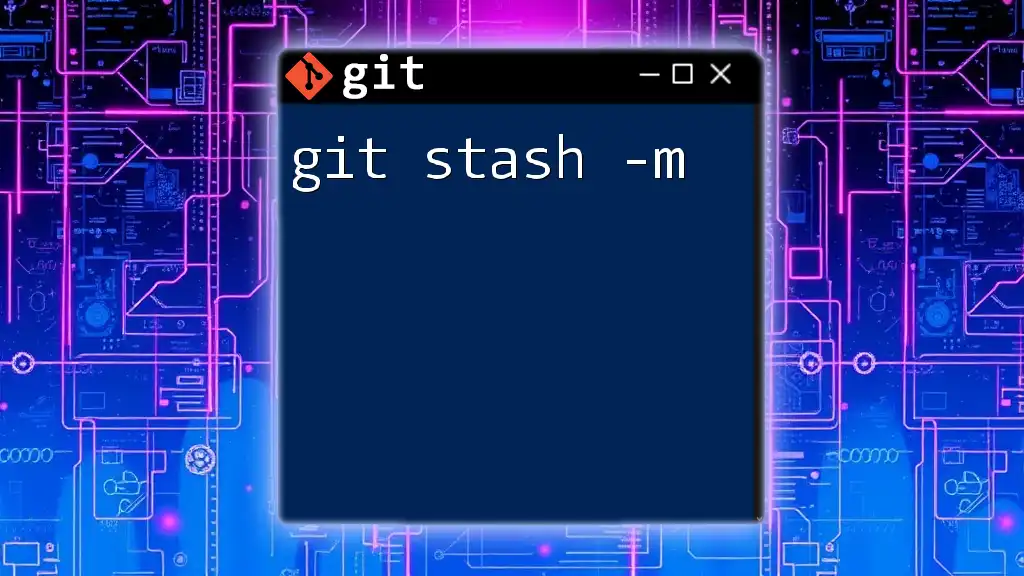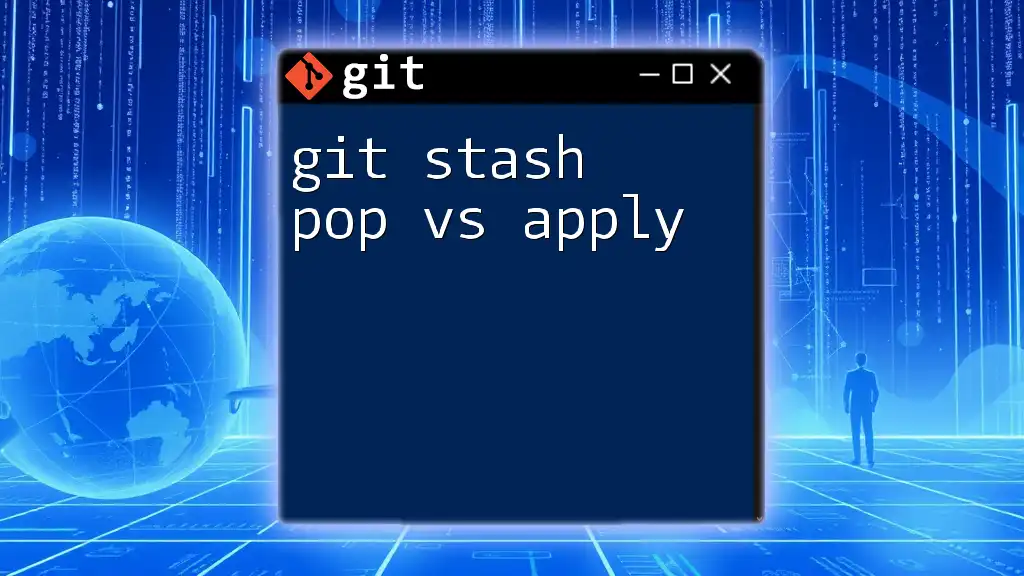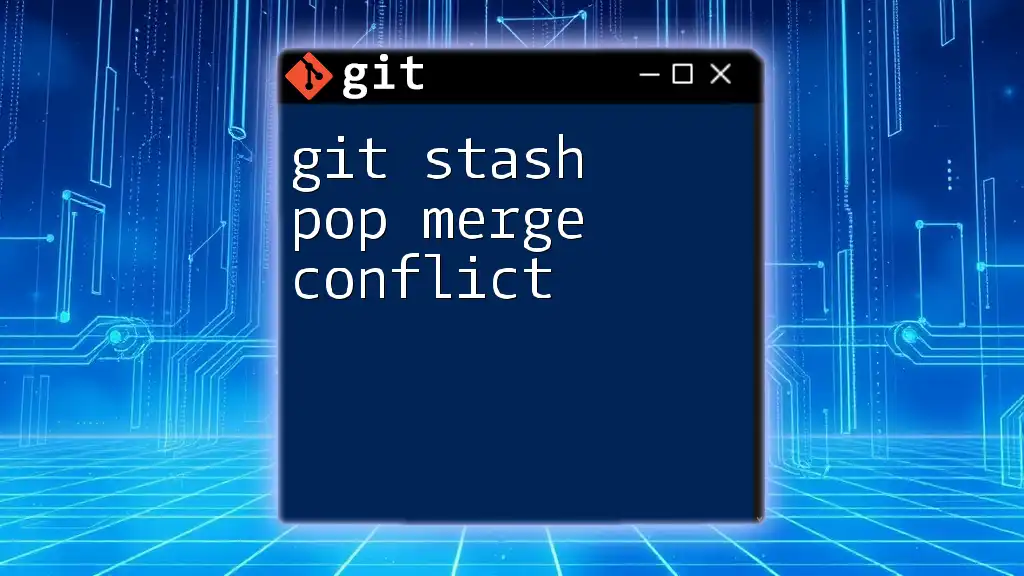To undo the most recent `git stash` and reapply the changes to your working directory, use the command `git stash apply` followed by `git stash drop` to remove the stash if you no longer need it.
git stash apply && git stash drop
Understanding Git Stash
What is Git Stash?
Git stash is a powerful command that allows developers to temporarily save changes in their working directory without having to commit them. This feature is particularly useful when you are in the middle of a task and need to switch branches or pull updates without losing your current work. By stashing your changes, you can return to them later without cluttering your commit history.
When to Use Git Stash?
There are several common scenarios where using `git stash` can prove beneficial:
- Switching Contexts: If you're in the middle of a feature and need to quickly switch branches to address an urgent bug, stashing your changes allows you to do so without committing incomplete work.
- Collaboration: When working in teams, you might need to pull updates from a shared repository. Stashing your local changes ensures you can do this without merge conflicts.
- Maintaining Clean History: If you're experimenting or working on a feature that isn't ready to be committed, stashing helps keep your commit history clean.

How Git Stash Works
Basic Commands Related to Stashing
Understanding some foundational commands related to stashing can ease your workflow:
- `git stash`: Saves your changes and reverts your working directory to match the last commit.
- `git stash list`: Displays a list of all stashed changes, showing them as `stash@{index}`.
- `git stash apply`: Reapplies the stashed changes to your working directory, leaving the stash intact.
Structure of Stashes
When you stash changes, Git creates a new commit object that contains the changes along with a reference to the original commit. You can view the details of a specific stash using:
git stash show stash@{0}
This command provides a summary of what changes are stashed, helping you remember what you saved.

Introducing git stash undo
What is git stash undo?
While there's no direct command called `git stash undo`, you can employ a combination of existing Git commands to effectively undo stashed actions. Understanding how to revert or reapply stashed changes is crucial for managing your Git workflow smoothly.
Using `git stash apply` effectively
The `git stash apply` command allows you to reapply saved changes without removing the stash from the stack. For instance, if you wanted to apply the most recent stash, you can run:
git stash apply stash@{0}
This command pulls the changes from the stash and applies them to your working directory. However, it’s important to note that if conflicts arise, you will need to resolve them before proceeding.
Using `git stash pop`
Another useful command in the context of stashing is `git stash pop`. This command applies the most recent stash and then removes it from the stash list. Here’s how you can use it:
git stash pop
The advantage of `git stash pop` is that it simplifies the process by applying the changes and cleaning up afterward. However, if conflicts occur, the stash will remain available for you to manage.
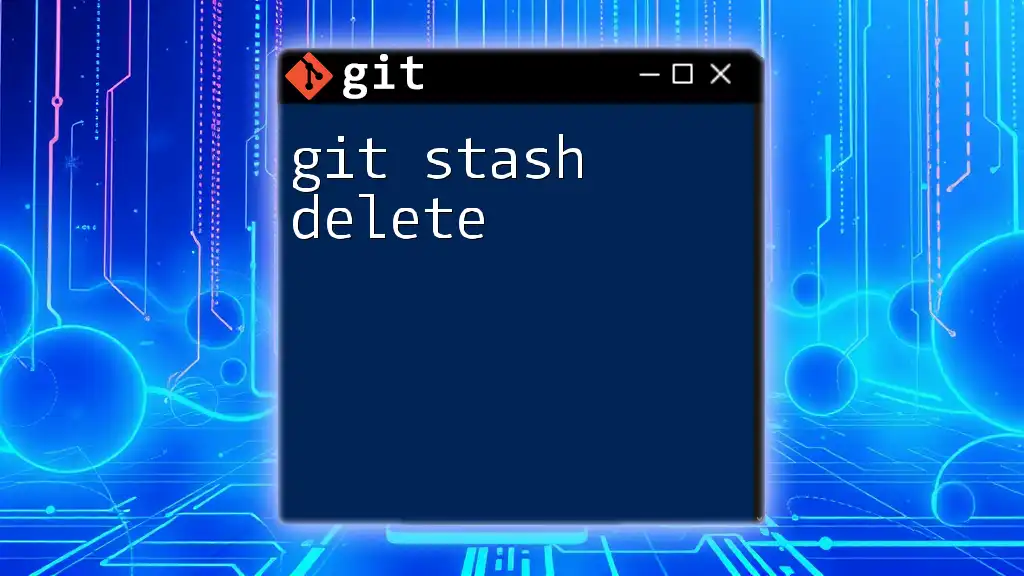
Undoing Stash Actions
Reverting a Stash Application
Scenario 1: Stashed changes cause conflicts
If you apply stashed changes and encounter conflicts, here's how to address them:
- Identify Conflicts: After applying a stash, Git will notify you of conflicts. You will see conflict markers in the affected files.
- Resolve Conflicts: Use your preferred text editor or IDE tools to resolve these issues. After resolving, mark the conflicts as resolved by staging the changes:
git add <file-with-conflicts>
- Finalize: If necessary, you can then conclude the merge by committing the changes.
In cases where the conflicts are too complex or undesired, you can revert your working directory back to the last commit:
git reset --hard HEAD
This command will discard all applied changes, restoring your directory to its previous state.
Removing a Stash Entry
Scenario 2: Stash entry no longer needed
If you've applied a stash and find that you no longer need the stashed changes, you can easily drop it with:
git stash drop
This command will remove the most recent stash. If you wish to delete a specific stash, you can specify it:
git stash drop stash@{1}
Clearing All Stashes
At times, you may wish to clear out all your stashed changes. This can be accomplished safely with:
git stash clear
This command removes all entries from the stash stack, helping maintain a tidy workspace.
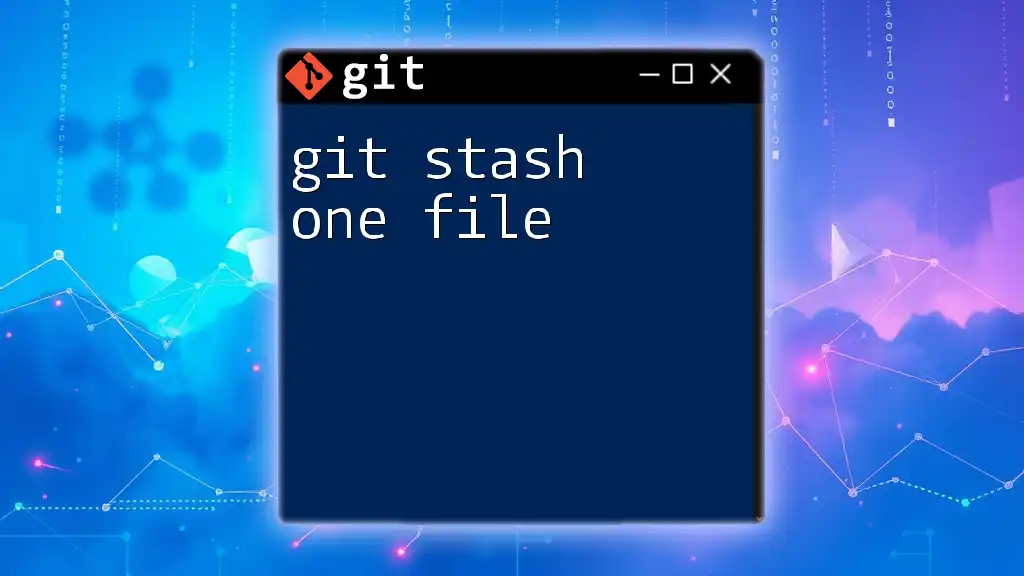
Best Practices for Using Git Stash
When to Stash and When Not to
Stashing can be a lifesaver but should be used judiciously. Use it when you know you’ll need to switch contexts quickly, but avoid overusing it as a replacement for proper version control practices. If a task is complete, consider committing instead of stashing.
Keeping Track of Your Stashes
Naming stashes can help maintain organization, especially when managing multiple entries. Use a message to clearly define the context of each stash:
git stash save "WIP: my feature"
This practice can save you time when you need to recall or differentiate among various stashes.
Documenting Stash Usage
Always consider documenting your stash usage, especially if you’re working within a collaborative environment. Clear documentation can help teammates understand the context of stashed changes and prevent confusion.
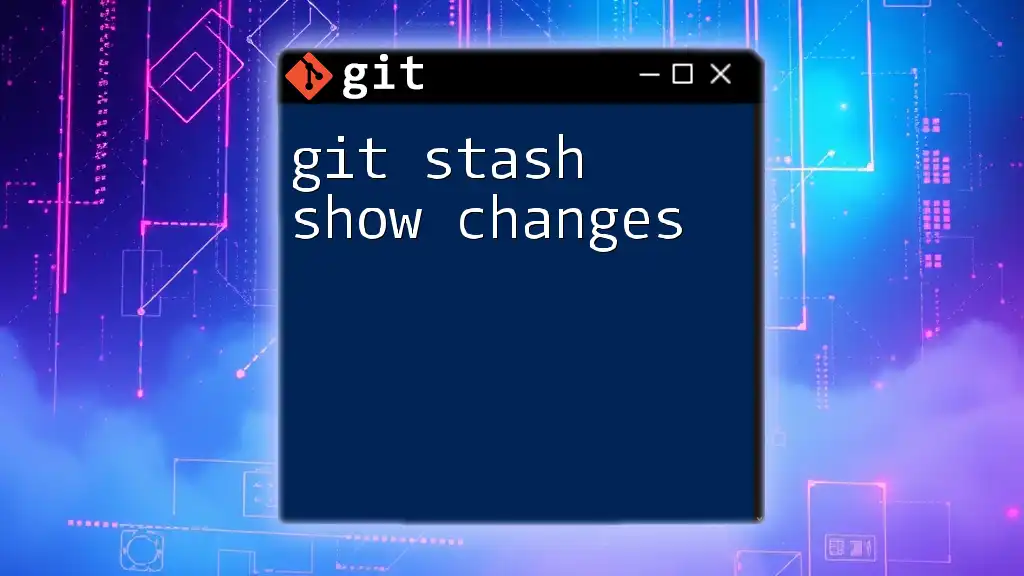
Conclusion
Understanding how to utilize `git stash`—and its related commands, especially in the context of undoing actions—can greatly enhance your productivity in Git. By mastering stashing, you can manage your workflow effectively and maintain a clean commit history while working on your projects.
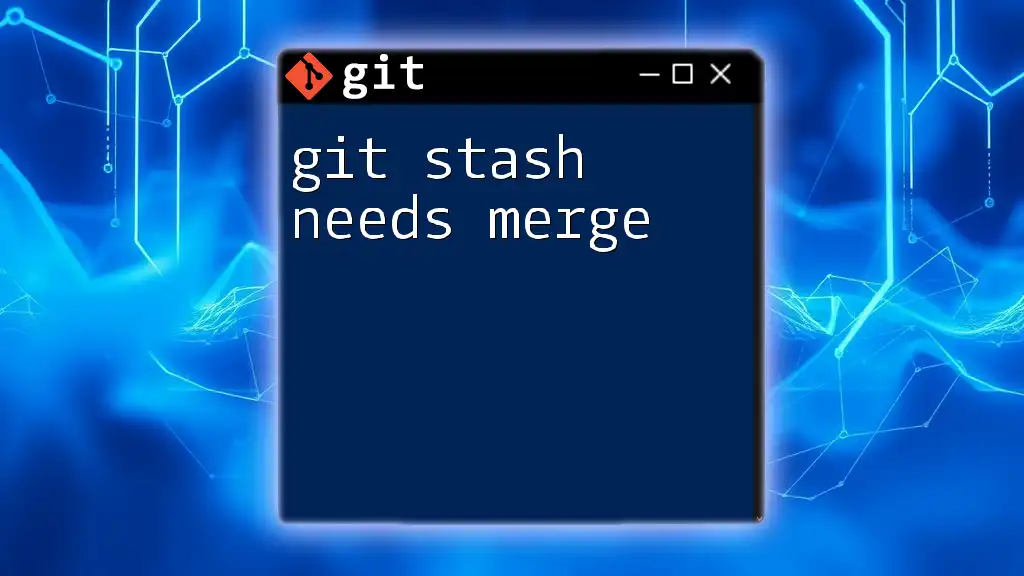
Additional Resources
For those looking to dive deeper, consider visiting the [official Git documentation](https://git-scm.com/doc) or exploring branching strategies to complement your stashing skills.

FAQs
What happens if I apply a stash and don't want to keep the changes?
You can resolve any conflicts as outlined previously and, if desired, reset your branch to discard the changes using `git reset --hard HEAD`.
Can I recover a stash after dropping it?
Once a stash has been dropped, it is typically unrecoverable. Therefore, be cautious when using `git stash drop`.
What's the difference between `git stash apply` and `git stash pop`?
The main difference lies in functionality. `git stash apply` reapplies changes but keeps the stash for future use, while `git stash pop` reverts the changes and also removes them from the stash list. Use `apply` when you might need the stash again, and `pop` when you are sure you want to remove it.

